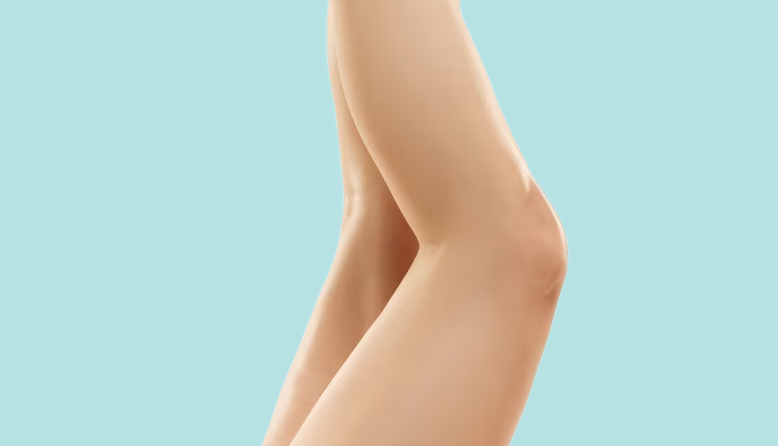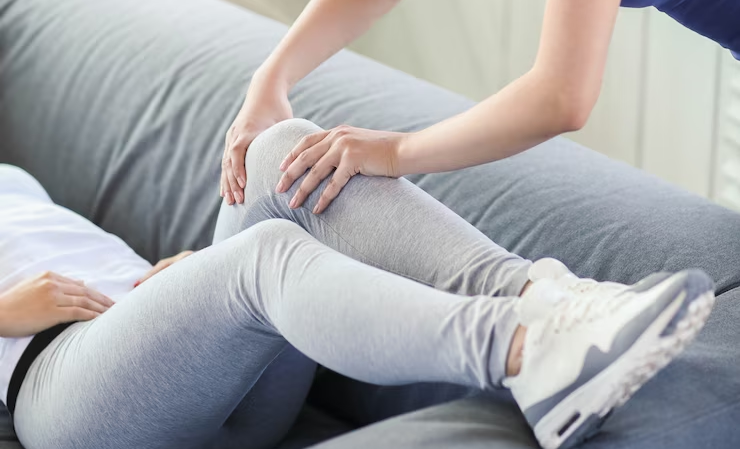- Call us
- 08.00 – 10.00
- Hitta hitt
- Personal
The knee is examined using an arthroscope, a thin metal tube with a small camera at the tip through which you can see the inside of the knee on a video screen. Any damage to the knee joint can be repaired with instruments inserted through an additional hole.
With the help of the arthroscope, you can see all the structures of the knee joint:
De flesta knäskador kan behandlas i samband med artroskopin.
The operation is carried out under local anesthesia or anesthesia. Therefore, you should pay attention to our rules about fasting and carefully read through the material you will receive about anesthesia. You will also receive instructions on clothing and hygiene to prepare you for the operation. The arthroscopy is carried out via 2-3 small incisions of approx. 8 mm. The incisions are sewn or taped after the operation. The knee is anaesthetized locally, which provides some pain relief for 6-8 hours. The surgical wounds are covered with plasters and then a bandage is placed around the knee joint. When your operation is finished, you rest in one of the clinic's recovery rooms where our nurses take care of you. Before you are discharged, the doctor who operated on you will inform you of the results. You will usually be discharged about 2 hours after the operation.


Will I be in pain after surgery?
Since you may be in pain when you get home, you should have bought Alvedon, Panodil or the equivalent yourself. We recommend that you take one of these pain relievers and the anti-inflammatory medication that you have been given. These tablets provide optimal pain treatment, better wound healing and reduce irritation in the surgical wound.
After returning home
We recommend that you stay still for a couple of days to reduce the risk of bleeding and swelling. For the first 2 days after the operation, you should have the leg in a high position. It is good if you have a relative nearby who can give you support and help.
Plaster/bandage
Keep the dressing on for the first day after surgery. If the bandage is too tight, you should reapply it. The next day, the entire dressing is removed. The patches should be changed if they become wet or bleed through. Bleeding dressings increase the risk of infection. If the wounds are still oozing after 4 days, contact us at Huddinge Orthopedics or your healthcare centre.
The elastic bandage can be used around the knee during the day during the first week after the operation.
Should there be swelling around the operation site, you can put a cooling bandage or ice pack on the knee. Place a towel in between to protect the skin. During the first day, you can advantageously put an ice pack on the knee joint. Remove it after about 20 min. This cooling treatment can be repeated at 3-4 hour intervals.
There may be a fluttering sound in the knee in the first period after the operation. This is normal.
Shower/ bath
If you received a water-repellent patch, you may shower 2-3 days after the operation. The plasters are changed if they have become wet. Until the stitches have been removed, you should avoid tubs, swimming pools and the like, as this increases the risk of infection.
To resume work
You can usually start working again as soon as the stitches have been removed, which is usually about 1-2 weeks after your surgery.
The first 2-3 days after the operation
You should only walk when necessary, otherwise lie with your leg elevated. To keep the blood circulation going, you should move your feet and ankles properly about every 10 minutes. Feel free to use the elastic bandage to reduce swelling, however, you should not use it during the night. In the following days, you can start walking a little more indoors - short distances and with many breaks as you place the operated leg high.
Removal of stitches
The stitches are removed at Huddinge Orthopedics after approx. 2 weeks.
Start looking at the training program you received with you. You can start these exercises a couple of days after the operation. Start with the lying exercises.
It is important that you constantly focus on how you perform the exercises so that you have control over the knee. It is also important that you continue to practice bending and especially stretching the knee joint. Remember that after a while you should fully extend the knee joint. You won't be able to do that at first, but keep practicing so that you maintain mobility. Otherwise, there is a risk that you may later have problems extending your knee! Do each exercise 10 times.
The exercises can cause pain and swelling. When you can perform an exercise without pain or swelling, you can increase to 2×10 and later to 3×10 repetitions. (It's normal to get exercise soreness.)
In addition to the above, you can place the operated leg high, touch the ankle and apply cold treatment.
If you have the opportunity to use an exercise bike, it is a good way to exercise the knee joint. Begin 7-10 days after surgery. Cycle without resistance for about 10 min.
In the following days, you increase the time until you eventually cycle for 30 minutes. After that, you can start cycling with light resistance.
With all operations there is a risk of complications. How big this risk is depends on the patient's general state of health. Some of the complications that can occur during knee arthroscopy are infection, damage to the cartilage, bleeding, reduced sensation and reduced ability to move. The risk of these complications is relatively small but, as I said, varies based on your state of health and your situation. What applies in your case, your specialist doctor will go over carefully with you, both verbally and in writing, at the time of consultation.
Physiotherapy
After the operation, it is important that you exercise the knee so that you can quickly regain mobility and strength. Therefore, we recommend that you participate in physical therapy, where you receive instructions from a physical therapist.
Physiotherapy includes:
You may be given crutches to take home with you.
You will receive a referral to physiotherapy before the planned operation.
You get the most out of the physiotherapy if you participate even before you are to have surgery. If you are unable to do so, you are also welcome after the operation. You can choose where you want to do the physiotherapy - it will be the same training program at all physiotherapy units that we recommend.
The goal of the training is to achieve:
Where should I turn if I have a problem?
If you have problems with:
-should you contact us at Huddinge Orthopedics or your health centre. If you are unlikely to get in touch with us, you can contact the nearest emergency department.
If you have any questions, you are always welcome to call our nurse.
We hope you recover soon!
You are welcome to contact the clinic if you have questions regarding knee arthroscopy, peephole surgery of the knee, or anything else that we can help you with. We look forward to hearing from you!

